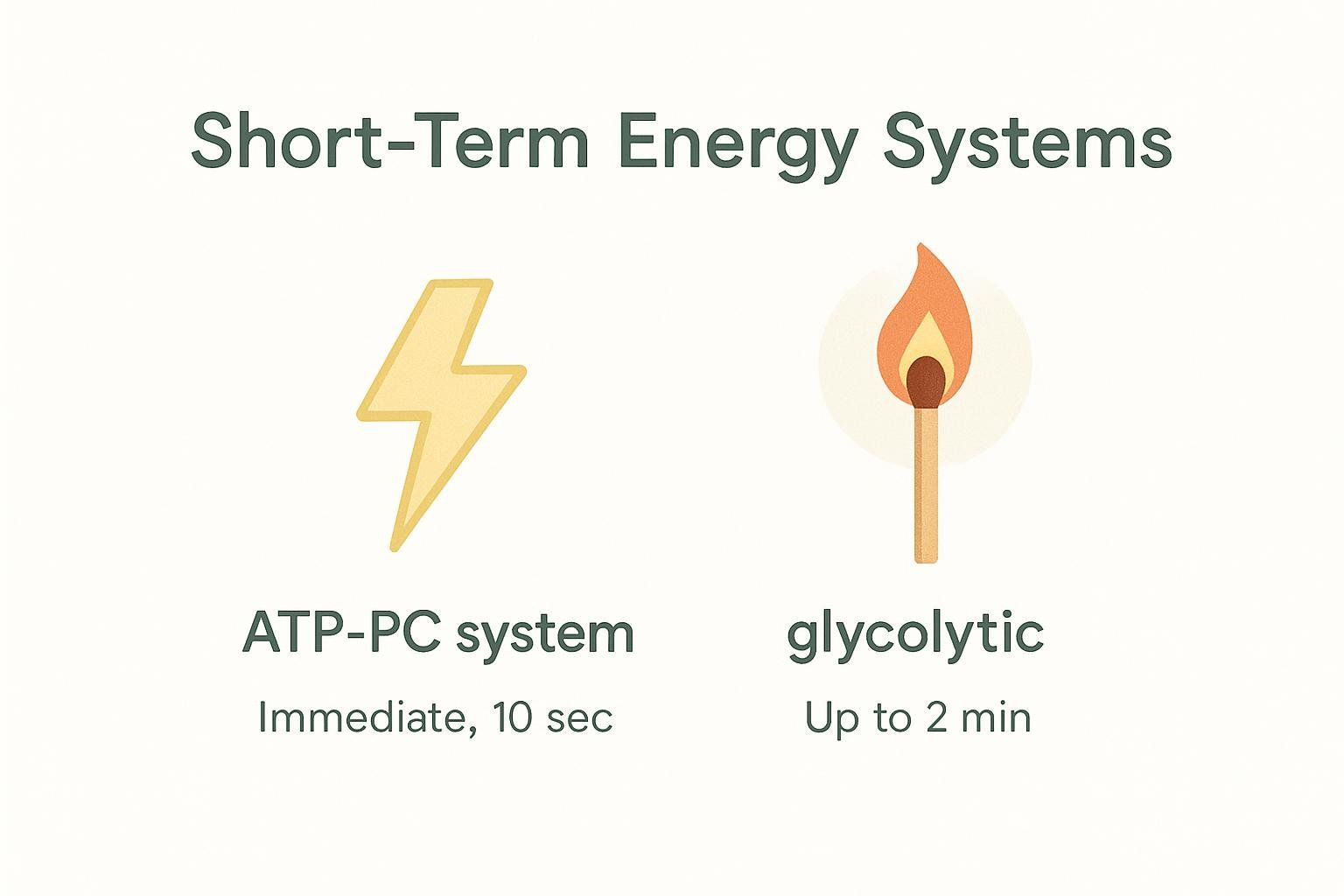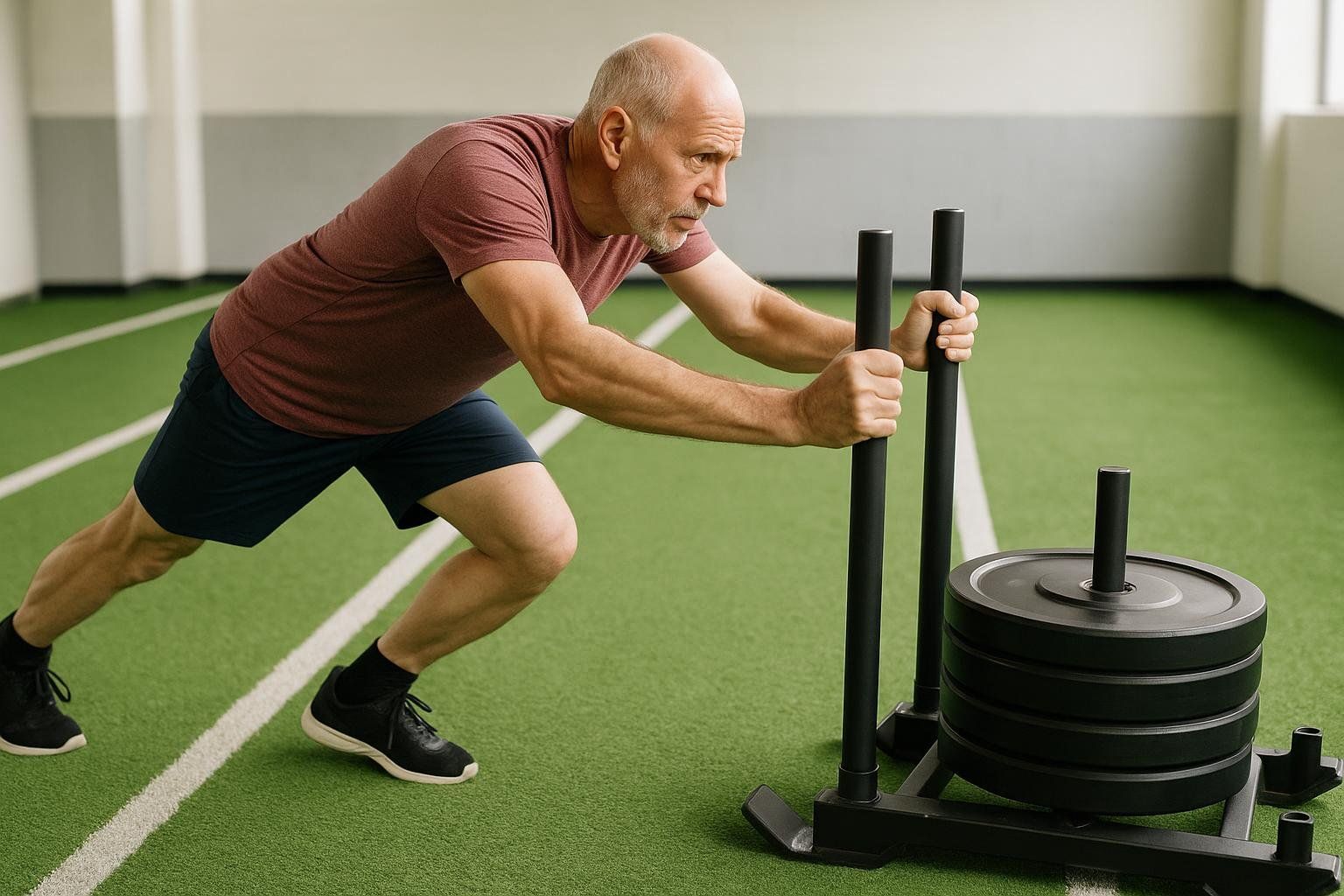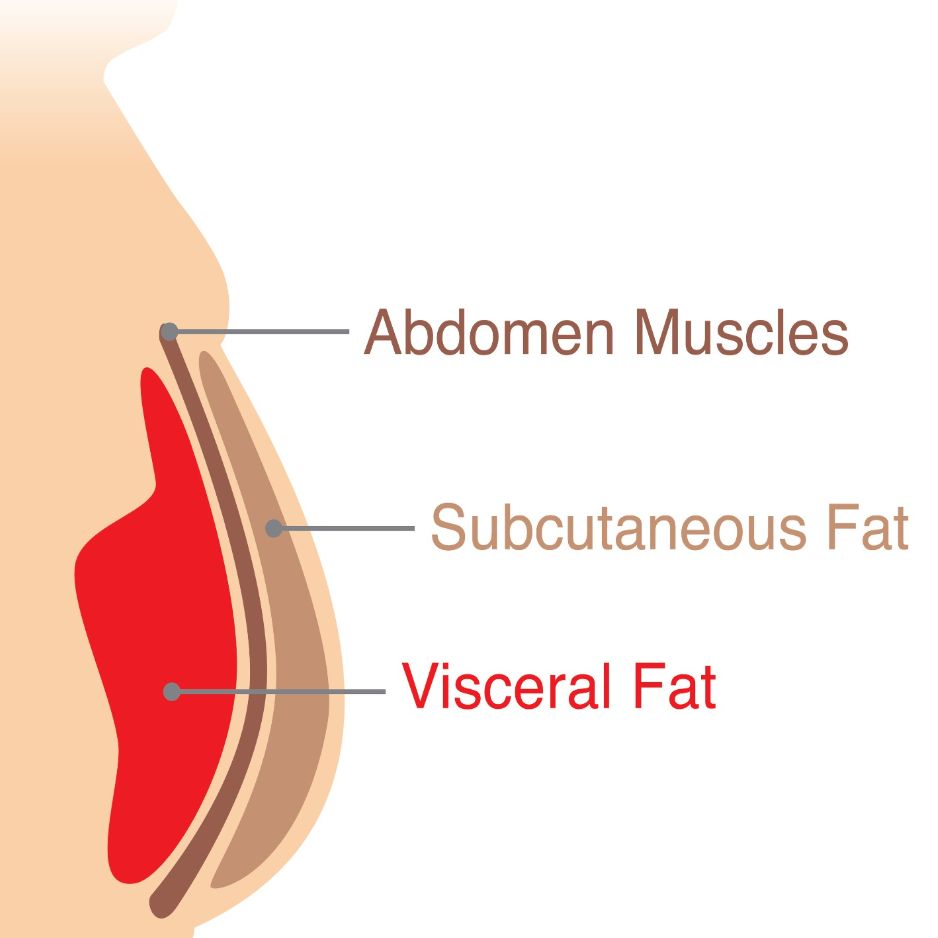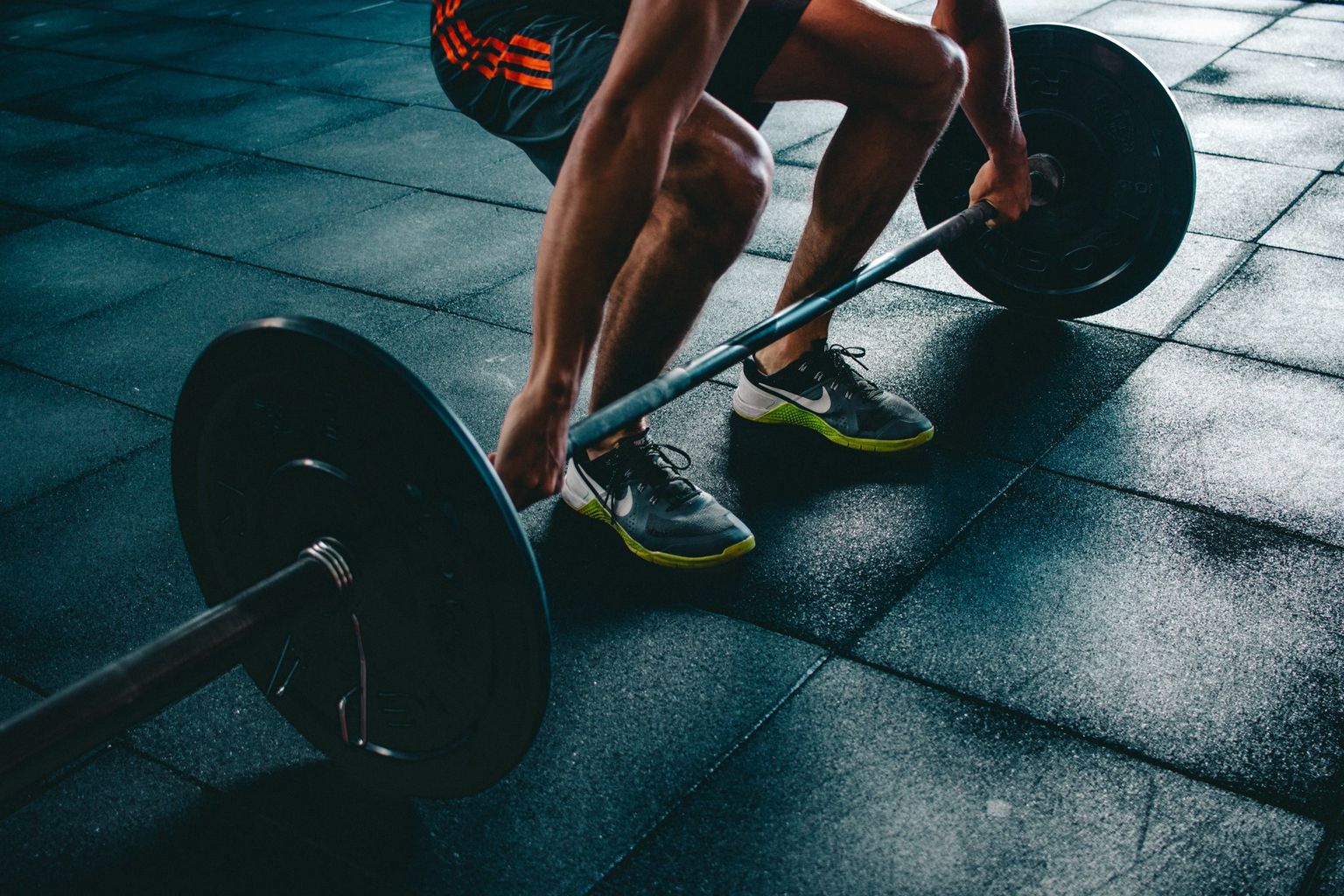Anaerobic Exercise: Benefits, Workouts & Science

Anaerobic Exercise: Benefits, Workouts & Science
Anaerobic exercise is the short-burst, high-intensity style of training that builds power, spikes your metabolism, and strengthens muscle and bone—all in sessions that fit a busy schedule.
This guide explains how anaerobic energy systems work, the proven health perks, sample workouts, and safety tips for every fitness level, from beginners and people managing diabetes to seasoned trainers.
Quick Primer: Aerobic vs. Anaerobic at a Glance
| Feature | Aerobic Exercise | Anaerobic Exercise |
|---|---|---|
| Primary fuel source | Oxygen + fat/carbs | Stored ATP, creatine phosphate, muscle glycogen |
| Intensity | Low–moderate (50–75% max effort) | High–maximal (80–100% max effort) |
| Typical duration | 2+ minutes to hours | Seconds to ~2 minutes |
| Examples | Jogging, cycling, steady-state rowing | Sprinting, heavy lifting, HIIT, plyometrics |
| Key benefits | Cardiovascular endurance, fat oxidation | Strength, power, muscle mass, after-burn (EPOC) |

Sources: Cleveland Clinic, WebMD
What Exactly Is Anaerobic Exercise?
“Anaerobic” literally means “without oxygen.” During very intense efforts, your muscles demand energy faster than your cardiovascular system can deliver oxygen. Instead, they rely on two rapid-fire energy systems:
- ATP-PC (Phosphagen) System – Uses stored adenosine triphosphate (ATP) and creatine phosphate (PC) for about the first 10 seconds of an all-out effort (Cleveland Clinic). Think a one-rep-max deadlift or 40-yard dash.
- Glycolytic System – Breaks down muscle glycogen without oxygen and becomes the dominant energy provider for efforts lasting roughly 10 seconds to two minutes, producing lactate as a by-product (Physio-pedia).
Once intensity drops or time stretches longer, your aerobic system takes over.

Top Benefits Backed by Research
1. Strength & Power Gains
Short-burst movements recruit fast-twitch fibers, driving neural adaptations that translate to higher lifts and faster sprints.
2. Increased Metabolic Rate (After-Burn)
High-intensity bouts elevate excess post-exercise oxygen consumption (EPOC). Your body burns extra calories for hours while it restores oxygen, clears lactate, and repairs tissue (Cleveland Clinic).

3. Improved Insulin Sensitivity & Blood-Sugar Control
Anaerobic modalities such as resistance training and HIIT enhance GLUT4 transporters, allowing muscles to absorb glucose more effectively—critical for type 2 diabetes management (American Diabetes Association).
4. Better Bone Density
Heavy, high-impact movements load the skeleton, stimulating bone-building cells—an improvement you can track using DEXA scan data for bone health.
5. Time Efficiency
You can reap significant fitness gains in sessions under 30 minutes—ideal for hectic schedules.
Physiology Deep Dive: Why Your Muscles Burn (But Keep Working)
The familiar “burn” you feel during an all-out set or sprint is linked to lactate production. Contrary to myth, lactate is not a useless waste product. Through the Cori cycle, your liver converts lactate back into glucose that muscles can reuse for energy.
Regular anaerobic training raises your lactate threshold—the point where lactate accumulates faster than it can be cleared—allowing you to push harder before hitting the wall (Frontiers in Physiology).
Sample Workouts (15–30 Minutes)
Option A: Dumbbell Strength Circuit
| Exercise | Reps | Rest |
|---|---|---|
| Goblet Squat | 8 | 30 sec |
| Bent-Over Row | 8 | 30 sec |
| Dumbbell Push Press | 8 | 30 sec |
| Walking Lunge | 8/leg | 30 sec |

Repeat the circuit for 4 total rounds.
Guidance: Choose a weight that makes the final 1–2 reps of each set challenging to complete while maintaining proper form.
Option B: Sprint Intervals (Treadmill or Track)
- Warm-up: 5-minute easy jog
- 8 × 20-second all-out sprints, 90-second walk between
- Cool-down: 5 minutes
Option C: 10-Minute Tabata Finisher
Eight rounds of 20 seconds work + 10 seconds rest:
- Jump Squats → Push-ups → Mountain Climbers → Burpees (repeat)

For more protocols, see our comprehensive Tabata Training Guide.
Programming Tips for Different Goals
| Goal | Weekly Anaerobic Dose | Notes |
|---|---|---|
| General fitness | 2 sessions | Allow 48 hours recovery |
| Muscle growth | 3–4 resistance days | Keep cardio sprints short to prevent excess fatigue |
| Endurance athlete | 1–2 HIIT/tempo days | Use lactate-threshold data to set pace and track muscle preservation with DEXA scans |
| Supporting fat loss | 2–3 mixed HIIT + strength | Pair with high-protein intake and DEXA tracking |
If you need a ready-made plan, our guide to periodized HIIT workouts walks you through step-by-step templates.
Safety & Special Populations
Type 2 Diabetes
- Check blood glucose before and after sessions.
- Keep fast-acting carbs on hand in case of hypoglycemia.
- Start with resistance circuits before adding all-out sprints (ADA).
Older Adults / Joint Concerns
- Swap jump squats for step-ups or sled pushes.
- Use moderate loads (5–8 RM) to reduce joint stress while still hitting anaerobic intensity.

New Exercisers
- Master movement patterns with lighter loads first.
- Begin with 10-second intervals; add duration only when form stays crisp.
Consult a qualified professional if you have cardiovascular conditions or orthopedic injuries.
General Recovery Guidelines
- Allow at least 48 hours between intense anaerobic sessions to let muscles and the nervous system recover.
- Prioritize 7–9 hours of sleep per night to support hormonal balance and tissue repair.
- Refuel within 60 minutes post-workout with a mix of protein (20–30 g) and complex carbs to replenish glycogen.
- Stay hydrated; even mild dehydration can hamper high-intensity performance and recovery.
- Incorporate low-intensity activities (walking, mobility work) on rest days to promote blood flow and reduce soreness.

How to Measure Progress
- BodySpec DEXA Scan: A scan every 8–12 weeks tracks lean-mass gains and visceral-fat reductions—details are in our DEXA Scan Complete Guide.
- Workout Log: Record weight, reps, or sprint times; aim for small weekly improvements.
- Increased Work Capacity: Track your ability to perform more reps at the same weight or achieve faster sprint times over successive sessions.
- Perceived Exertion: Feeling less “burn” at a once-brutal pace is a clear indicator of progress.
FAQs
Is anaerobic exercise safe every day?
High-intensity efforts need recovery. Most people thrive on 2–4 sessions per week.
Do I need fancy equipment?
No. Explosive body-weight moves can deliver a potent anaerobic stimulus.
Will anaerobic workouts make me bulky?
Not typically. “Bulking” requires high-volume training and a calorie surplus. Anaerobic exercise builds lean muscle and power, not large size.
How long before I see results?
Strength and power gains appear in as little as 4 weeks; body-composition changes typically show on a DEXA scan after 8–12 weeks.
The Bottom Line
Anaerobic exercise can deliver noticeable strength, metabolic, and blood-sugar improvements with just a few focused sessions each week. Add high-intensity work to your routine and use periodic DEXA scans to verify the gains.


